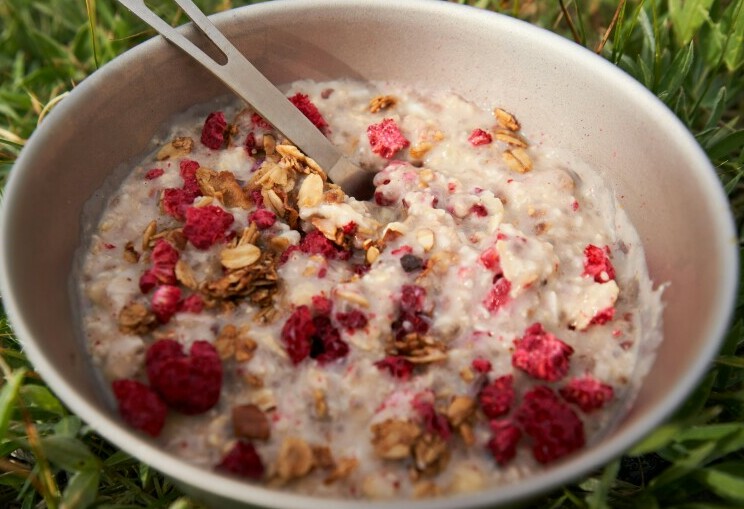 When I talk about belly fat, I’m referring to that stubborn layer that often resists traditional weight-loss efforts. It’s not just a concern for appearance, excess visceral fat around your midsection can have significant health implications, including a higher risk of cardiovascular disease, type 2 diabetes, and certain types of cancer. With these facts and more, looking into healthy meal plans to lose belly fat at this point is absolutely necessary.
When I talk about belly fat, I’m referring to that stubborn layer that often resists traditional weight-loss efforts. It’s not just a concern for appearance, excess visceral fat around your midsection can have significant health implications, including a higher risk of cardiovascular disease, type 2 diabetes, and certain types of cancer. With these facts and more, looking into healthy meal plans to lose belly fat at this point is absolutely necessary.
However, the role of nutrition in managing body fat is critical, and you have the power to influence your health through smart food choices. Targeting belly fat goes beyond just reducing calories—it’s about eating smarter, not just less. The balance of macronutrients—carbohydrates, proteins, and fats—in your diet can directly impact your body’s ability to shed unwanted belly fat.
Fiber-rich foods and whole grains play a starring role here, largely because they can help you feel full longer and reduce overeating. By choosing high-fiber options, you’re not only supporting weight loss but also benefiting from their broader nutritional value.
Now, I know you might have heard a variety of myths and quick fixes promising to melt belly fat instantly. The truth is, there aren’t any magic solutions. Sustainable reduction of belly fat involves adopting long-term dietary changes that are backed by science, not just anecdotal evidence.
The Foundation of a Belly-Fat-Reducing Meal Plan
Creating a meal plan aimed at reducing belly fat isn’t just about cutting calories; it’s about choosing the right type of calories that work effectively against abdominal fat. A calorie deficit is essential, meaning I eat fewer calories than my body burns. But the quality of those calories is just as crucial.
Protein is my go-to for meals that satisfy without going overboard on calories. I focus on lean sources like chicken breast, fish, legumes, and tofu. They help me feel full longer, reducing the temptation to snack, and they’re essential for maintaining muscle mass while I lose weight.
When it comes to fats, I don’t shun them, I select them wisely. Monounsaturated and polyunsaturated fats—found in avocados, nuts, seeds, and fish—are beneficial for heart health. They aid in keeping me satisfied and can be part of a strategic meal plan to manage weight.
Vegetables are non-negotiable. They add volume to meals, meaning I can eat a hefty portion without piling on calories. Plus, the variety of colors on my plate isn’t just pleasing to the eye; it ensures I’m getting a wide range of nutrients.
Water is my beverage of choice. Staying hydrated supports metabolism and may help prevent mistaking thirst for hunger, which can lead to overeating. Drinking water before meals can also help curb appetite.
Next, I’ll share some sample meal plans that put these principles into practice. They’re designed to make your weight loss journey less about what you have to give up and more about what you can enjoy to achieve your goals.
Sample Meal Plans and Recipes
Starting your day with the right breakfast can set the tone for your entire day. A good breakfast should not only make you feel full and energetic but also help stoke your metabolism without contributing to belly fat. Think of options like oatmeal topped with berries and a sprinkle of chia seeds or a smoothie that combines leafy greens, a scoop of protein powder, and a small portion of avocados for healthy fats. Lunch is critical in maintaining your focus and energy levels throughout the afternoon. To avoid the afternoon slump, you’ll want meals that are rich in nutrients but light enough to prevent you from feeling sluggish. Salads with grilled chicken, salmon, or legumes, tossed with a wide array of vegetables and dressed with olive oil and vinegar, can be both fulfilling and effective in targeting belly fat.
Lunch is critical in maintaining your focus and energy levels throughout the afternoon. To avoid the afternoon slump, you’ll want meals that are rich in nutrients but light enough to prevent you from feeling sluggish. Salads with grilled chicken, salmon, or legumes, tossed with a wide array of vegetables and dressed with olive oil and vinegar, can be both fulfilling and effective in targeting belly fat.
Dinner should be a time to unwind and nourish your body without overindulging. Opt for baked or grilled lean proteins, like turkey or fish, complemented by a substantial serving of vegetables and a side of quinoa or sweet potato. These meals provide satisfaction and essential nutrients without an excess of calories.
Snacks are often the pitfall of any meal plan. To ensure you’re making healthy choices, have on hand a variety of nuts, yogurt, or cut vegetables with hummus. These help in managing hunger pangs and provide a balanced mix of macronutrients.
Remember, portion control is crucial in any meal plan aiming to reduce belly fat. Familiarizing yourself with what a serving size actually looks like can prevent overeating. Use smaller plates, bowls, and cups to help manage your portions and avoid eating straight from the package.
Sustaining Healthy Eating Habits
I’ve explored calorie-balanced meals and recipe ideas to help reduce belly fat. But maintaining these changes is key. Consistency is where real transformation happens.
Yo-yo dieting is an all-too-common trend, and it simply doesn’t work for lasting weight loss. Your body seeks stability, and frequent weight fluctuations can be stressful both physically and mentally.
Mindfulness can transform your relationship with food. When you eat, focus on your meal. Chew slowly, savor the flavors, and listen to your body’s hunger and fullness cues. Mindful eating helps prevent overeating and makes meals more enjoyable.
Don’t forget the role of exercise. While your kitchen habits are crucial, regular physical activity helps burn calories and can specifically target visceral fat—the type around your midsection.
Goal setting is invaluable. Start with realistic, measurable goals, like incorporating more vegetables into your meals or going for a daily walk. Achieving these can fuel your motivation to continue.
Setbacks will happen, and that’s perfectly normal. The key is not to let them derail your entire effort. Acknowledge them, learn from them, and then get back on track. Remember, a healthy weight-loss journey is a marathon, not a sprint.
By combining these sustainable eating habits with physical activity and a supportive mindset, you’re setting yourself up not just for a trimmer waistline, but also for a healthier, happier life.
I believe you gain one thing or the other from this post. Do not hesitate to send your comments, questions, and concerns. Write them on the comments section, they will be well attended to. Thanks for your time and be on the lookout for the next blog. Till then, stay healthy and remain blessed. Shalom.

hey, you’re spot on about the importance of addressing belly fat for both appearance and health reasons. It’s fantastic to see your commitment to seeking out healthy meal plans to tackle this issue.
You’re absolutely right in emphasizing the role of nutrition in managing body fat. It’s not just about cutting calories; it’s about making smart food choices that support overall health and weight loss goals. Incorporating fiber-rich foods and whole grains into your diet is indeed a powerful strategy, not only for weight loss but also for maintaining overall well-being.
And you hit the nail on the head when you mentioned the prevalence of myths and quick fixes surrounding belly fat reduction. Sustainable results come from evidence-based, long-term dietary changes rather than relying on gimmicks.
It is clear you’ve done your research on the importance of nutrition in managing belly fat. Have you found any specific dietary changes or meal plans that have worked well for you in your journey towards a healthier lifestyle?Keep up the great work, and remember that small, consistent steps toward healthier eating habits can make a big difference in the long run!
warm reguards
matthew
Hey Matthew, thanks a ton for your encouraging words and insightful perspective on my post. I’m really delighted you found it interesting and educational.
Meal planning has been a game-changer. By preparing meals in advance, one can ensure that nutritious options are readily available, making it easier to stick to one’s goals.
In my journey towards a healthier lifestyle, I’ve focused on incorporating more whole, nutrient-dense foods into my meals. A balanced approach seems to work well for me, emphasizing a mix of lean proteins, healthy fats, and a variety of colorful fruits and vegetables. I’ve also paid attention to portion control, trying to be mindful of what and how much I eat.
It’s essential to acknowledge that everyone’s journey is unique, and what works for one person might not work for another. Experimenting with different approaches and finding what suits your body and lifestyle is key.
Thanks again for the encouragement. Stay healthy.